This article was co-authored by Alina Lane, DDS. Dr. Alina Lane is a Dentist who runs All Smiles Dentistry, a general practice dental office based in New York City. After completing a DDS at the University of Maryland, Dr. Lane completed a year-long clerkship in Implantology at the University of Maryland, where she focused on the advanced restoration of dental implants. She continued her advanced education by completing a General Practice Residency at Woodhull Medical Center, an affiliate of the NYU School of Medicine. She received the Woodhull Medical Center Resident of the Year 2012-2013.
There are 9 references cited in this article, which can be found at the bottom of the page.
This article has been viewed 117,667 times.
A dental crown is a sort of "cap" that can be placed over a tooth for a variety of reasons. It can help to restore the shape or strength of a tooth, support a bridge, protect a tooth with a large filling, or cover discoloration. However, there are several problems that can occur with a dental crown, most of which are avoidable.
Steps
Selecting the Right Materials
-
1Check the color. Before getting the permanent crown inserted, your dentist will carefully match the color of the crown to the color of your teeth to ensure it looks natural. He or she should consult you, giving you a chance to approve or disapprove of the selection.[1] Using a mirror, look in your mouth at the surrounding teeth to see if they are the same hue as the crown. Don’t be afraid to reject your dentist’s initial selection. It’s your mouth, after all, and you should be happy with your crown.
- You should also check the color in natural sunlight. Sometimes the lighting in a dentist's office can be bright and confusing. Check the color outside, too, to see what it will look like in everyday lighting.
-
2Check the shape. Ensure the shape of your permanent crown is correct. A properly shaped crown will make contact with the teeth on either side of it so food doesn’t become lodged in the gaps. A poorly-made crown may cause food to get stuck on either side of the tooth.[2] Furthermore, crowns that are too big can cause trauma to the jaw as it is bitten by the tooth opposite it. This trauma may, in turn, lead to painful pulpitis, the inflammation of the tooth pulp (nerve).Advertisement
-
3Choose a strong cement. Your crown may come out due to the use of a weak cement. With newer crowns, the cement tends to be very strong, but older crowns have a greater tendency to fail due to weak cement.[3]
- If the cement has failed, you may look in your mouth and see that there is still some tooth and filling in your mouth. The crown itself will appear to be hollowed-out, and only crown material will be present within it.
-
4Do not use full porcelain crowns. Porcelain is very brittle, and full porcelain crowns are more likely to fail than metal crowns. Choose a more robust crown of metal or zirconia, which often include a ceramic layer on top to look like natural teeth. Other options include gold and other metals that can stand up to higher grinding pressures and have greater durability.
- Many problems with porcelain crowns cannot be avoided. The porcelain may have been fired incorrectly in the lab, or might not have been made thick enough. However, even porcelain-topped crowns have a risk of chipping, showing the metal underneath.[4]
- Besides crown breakage or failure, porcelain crowns can rapidly wear down opposing teeth if the porcelain surface becomes rough.
- Zirconia crowns are very strong, so they have a very low fracture rate. In addition, they can be matched very closely to the color of your natural teeth, and there's no metal in a solid zirconia crown.[5]
Eating Properly
-
1Avoid certain foods. Hard and sticky foods should not be eaten while wearing a temporary crown. Examples of hard foods include raw vegetables, hard candies, and mints which might break your crown. Examples of sticky foods include caramel, taffy, or chewing gum.
-
2Be careful when eating very hot or very cold foods. With a metal crown, especially, you will experience a slight to moderate pain or sensitivity in the crowned tooth. This is due to the greater thermal conductivity of the metal crown. Sensitivity will typically be felt at the gum-line.
- Cold sensitivity should only last for about 6 weeks. Sensitivity to heat should last only about a week. If sensitivity to either persists beyond the expected time, you may require a follow-up visit with your dentist.
-
3Chew gently. Your crown may be sensitive to pressure. If you have to chew on it, be slow and gentle in your application of pressure. If you feel pain, however slight, stop chewing and try to eat a smaller portion.
- Chew with the side of your mouth opposite the side where your crown is whenever possible.
- Do not use toothpicks to scrape or force food bits from between your teeth; you may inadvertently loosen or remove the crown.
Playing It Safe
-
1Maintain proper oral hygiene. One possible problem with a dental crown is that the tooth underneath your crown could start to decay. You can avoid this by adhering to a regular oral hygiene regimen which includes brushing and flossing regularly.[6]
- Brush your teeth at least twice a day. You are still at risk for plaque, tooth decay, and gum disease on and around the crowned tooth. However, you can still brush the crown the same way you would brush your natural teeth.[7]
- The major difference when practicing oral hygiene with a crowned tooth is the way you floss. Floss side to side, rather than up and down. In other words, thread the floss between your teeth as your normally would, but instead of lifting the floss back out the same way you inserted it between your teeth, pull it out laterally, through the gap in your teeth. This avoids the possibility of you lifting the crown out along with the floss.
- You can also use an oral irrigator when you floss, which can be great for massaging your gums.
- Regular dental visits ensure that your dental problems are detected at an early stage and treated instantly.
- The accumulation of plaque and tartar around a dental crown can cause irritation to the surrounding soft gums and cause gum inflammation. Prolonged gum inflammation can cause gingivitis or periodontitis, which is characterized by the loosening of teeth due to loss of attachment.
-
2Invest in a bite guard. A bite (or occlusal) guard is a special covering for the teeth which offers protection. Popular in sports where threat of dental damage is high, they are also often prescribed for people who clench their jaws or grind their teeth at night.[8] A good mouth guard will be comfortable, durable, and easily cleaned. There are various kinds:
- Stock mouth protectors can be bought off-the-shelf at local department stores. They offer limited adjustability and are not recommended for use by dentists.
- Boil and bite mouth protectors are available at sporting goods stores and can be adjusted to a greater degree than stock mouth protectors. They are placed in hot water to soften, then placed in the mouth to form a semi-mold around the teeth.
- Custom mouth protectors are made individually by professional labs contracted by your dentist. By making an impression of your teeth, your dentist can create a mold that perfectly protects your mouth.
- A fourth kind of bite guard is also custom ordered from your dentist and meant for night use, in cases of teeth grinding during sleep. Called a nocturnal bite plate or bite splint, these will prevent potentially damaging jaw movements during sleep.
-
3Do not contract unnecessary dental surgeries. If a new type of filling or crown is developed, do not feel obligated to trade up for the new one. Teeth adjacent to the crowned tooth should be left alone unless absolutely necessary. For instance, do not insist that your dentist remove your fillings on the teeth next to the crowned tooth simply because you do not like the way they look. Every time you adjust your teeth and jaw, you run the risk of damaging the already vulnerable crowned tooth. You may end up needing a root canal or, at the very least, experience painful inflammation.
-
4Adjust your bite. An uneven bite occurs when the crowned tooth comes in contact with its upper or lower counterpart before the rest of your teeth do. This can cause many dental problems over time, such as TMJ, jaw pain, headache, and even stomach problems. You can adjust your bite with surgery, orthodontics, or with selective modifications.
- Selective modifications involve making changes to one part of the jaw which is causing pain or interference with your crown. A dentist may employ a dental drill to smooth areas where teeth are not coming together properly, just as you might use sandpaper to smooth away a piece of rough wood. This is the easiest and safest option to correct bit problems.
- Orthodontists can correct your bite with braces. Braces are affixed to your teeth to move them into proper alignment. Your dentist will be able to recommend an orthodontist to you if he or she believes you would benefit from braces.
- You can also get jaw surgery. This can be expensive and is recommended only in extreme cases of jaw damage such as dislocated or torn cartilage.
- If you know your bite is uneven before getting the crown, let your dentist know.
-
5Brush gently. Gum recession due either to toothbrush abrasion or natural aging may expose the metal substructure of porcelain crowns. If you see a gray line just above your gums but below the crowned tooth, you are seeing the metal substructure.[9] While you cannot prevent natural recession due to age, you can take to preventative measures against toothbrush abrasion.
- Spend no more than two to three minutes brushing. Do not use long horizontal scrubbing along the gums. Instead, use the roll method, in which you move the head of the brush in circles around your mouth from the top of the tooth to the base, where it meets the gum line.[10]
- Use mouthwash to avoid gum inflammation, which usually takes place where the gum and crown intersect, or between teeth.
-
6Stay cognizant of your crown’s condition. Pay attention to the feeling of the crown in your mouth. Loose crowns can be swallowed or become lodged in the throat. If you feel it coming loose after probing it gently with your tongue, contact your dentist immediately.
- Do not discard a crown that comes out. Remove loose debris from around the tooth and inside of the crown. [11] You can brush, scoop, or rinse the debris out of the inside of the crown. Figure out what the proper position of the crown is by placing it back in your mouth until it “clicks” into place over the tooth it was covering. Without applying pressure, close your mouth slowly to ensure that you have it in the correct position. “Glue” the loose crown back in place with dental adhesive. You can apply as much as you want; excess can be wiped away.
- Not wearing your crown for a long time after it has come out can cause your teeth to shift, but only a properly seated crown should be worn. If you cannot identify the correct position the crown was in before it fell out, do not wear it. Schedule an appointment with your dentist so he or she can assist you.[12]
Expert Q&A
Did you know you can get expert answers for this article?
Unlock expert answers by supporting wikiHow
-
QuestionCan a lab darken a new crown that hasn't been cemented in my mouth yet?
 Cristian Macau, DDSDr. Macau is an oral surgeon, periodontist, and aesthetician at Favero Dental Clinic in London. He received his DDS from Carol Davila University of Medicine in 2015.
Cristian Macau, DDSDr. Macau is an oral surgeon, periodontist, and aesthetician at Favero Dental Clinic in London. He received his DDS from Carol Davila University of Medicine in 2015.
Doctor of Dental Surgery
-
QuestionWhat kind of crowns do you usually recommend to patients?
 Alina Lane, DDSDr. Alina Lane is a Dentist who runs All Smiles Dentistry, a general practice dental office based in New York City. After completing a DDS at the University of Maryland, Dr. Lane completed a year-long clerkship in Implantology at the University of Maryland, where she focused on the advanced restoration of dental implants. She continued her advanced education by completing a General Practice Residency at Woodhull Medical Center, an affiliate of the NYU School of Medicine. She received the Woodhull Medical Center Resident of the Year 2012-2013.
Alina Lane, DDSDr. Alina Lane is a Dentist who runs All Smiles Dentistry, a general practice dental office based in New York City. After completing a DDS at the University of Maryland, Dr. Lane completed a year-long clerkship in Implantology at the University of Maryland, where she focused on the advanced restoration of dental implants. She continued her advanced education by completing a General Practice Residency at Woodhull Medical Center, an affiliate of the NYU School of Medicine. She received the Woodhull Medical Center Resident of the Year 2012-2013.
Board Certified Dentist
References
- ↑ https://strongsmilesdental.com/blog/dentists-match-color-teeth/
- ↑ http://jamiethedentist.com/dental-crowns/risks-and-problems
- ↑ http://jamiethedentist.com/dental-crowns/risks-and-problems
- ↑ Alina Lane, DDS. Board Certified Dentist. Expert Interview. 21 April 2020.
- ↑ Alina Lane, DDS. Board Certified Dentist. Expert Interview. 21 April 2020.
- ↑ https://my.clevelandclinic.org/health/treatments_and_procedures/hic_Dental_Crowns
- ↑ Alina Lane, DDS. Board Certified Dentist. Expert Interview. 21 April 2020.
- ↑ http://www.mouthhealthy.org/en/az-topics/t/teeth-grinding
- ↑ http://jamiethedentist.com/dental-crowns/risks-and-problems
About This Article
To avoid dental crown problems, start by avoiding hard and sticky foods, like raw vegetables and chewing gum, which can break your crown. Additionally, chew your food gently or on the opposite side of your mouth, since your crown may be sensitive to pressure. You should also brush your teeth at least twice a day and floss regularly prevent decay in the tooth beneath the crown. It may also be useful to invest in a bite guard to protect your crown at night if you clench your jaw or grind your teeth when you sleep. For more tips from our Dental co-author, including how to choose the best material for your crown, read on!
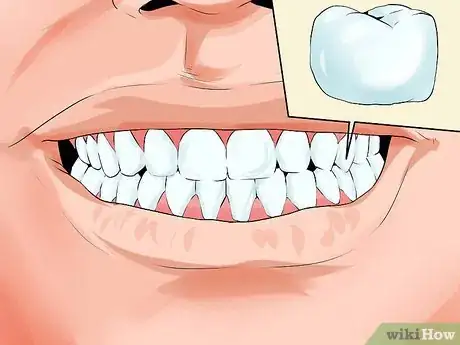
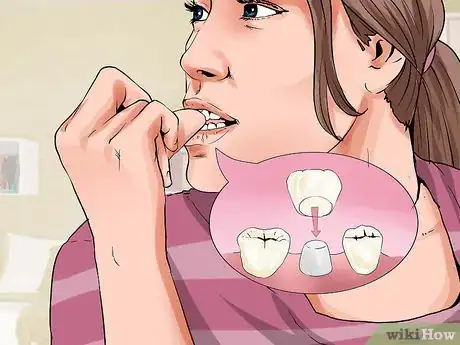
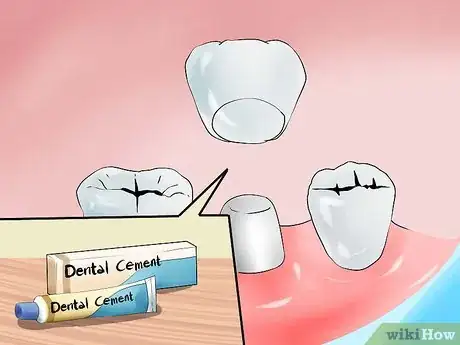
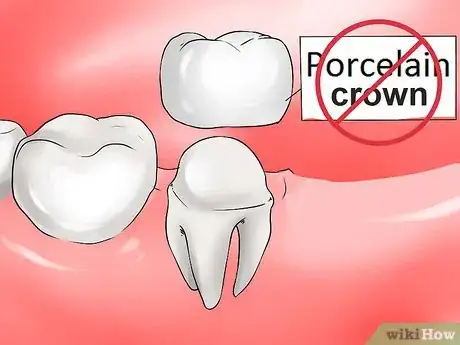

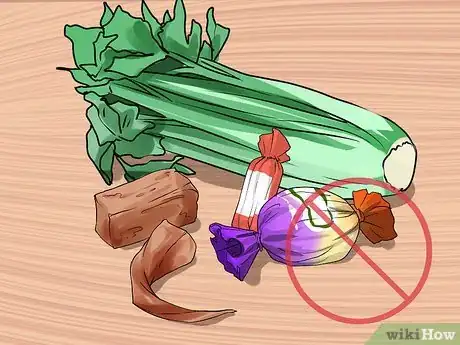
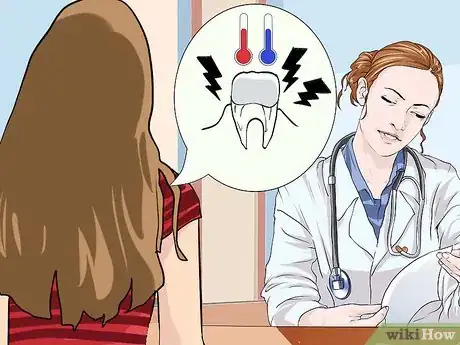
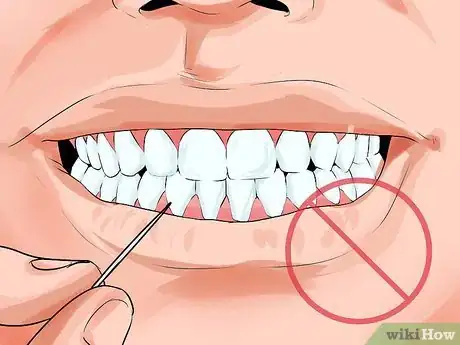
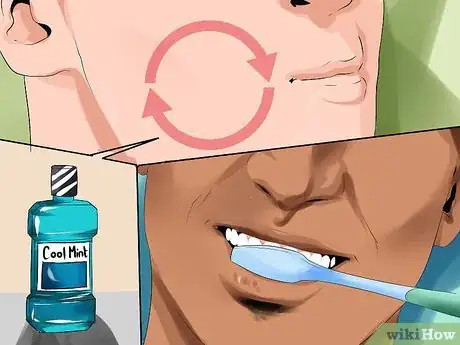
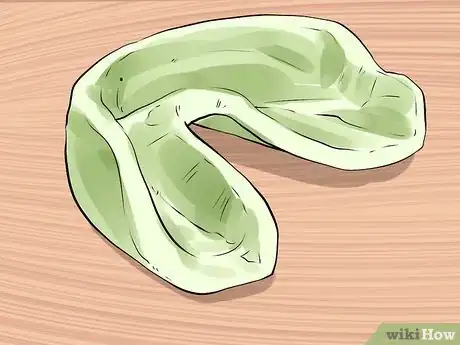
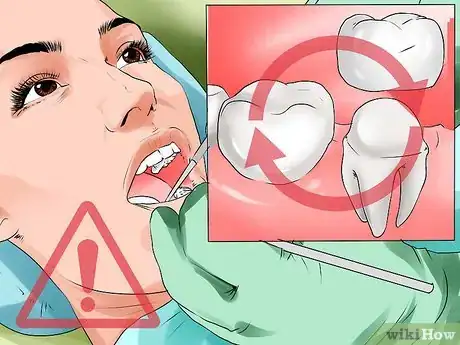
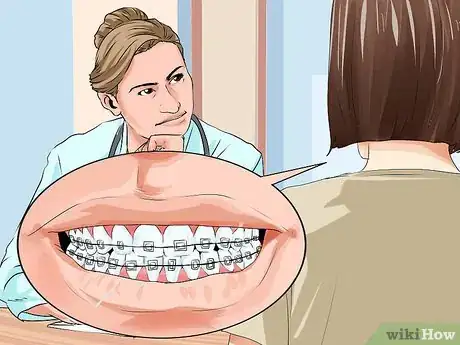
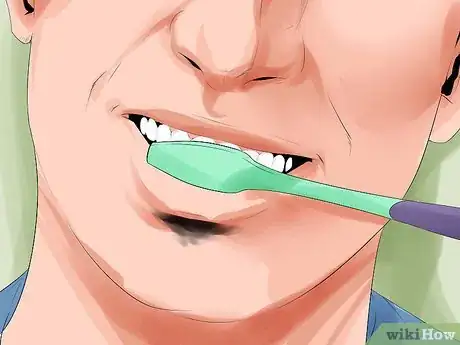
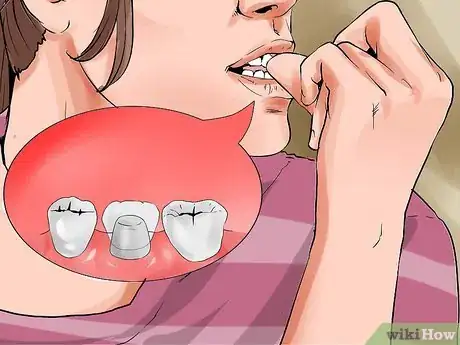
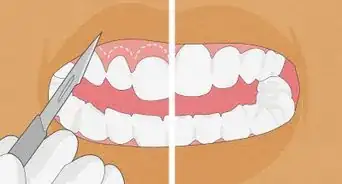
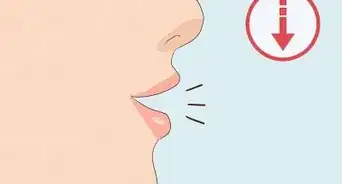
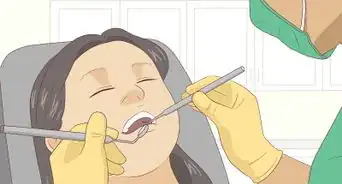
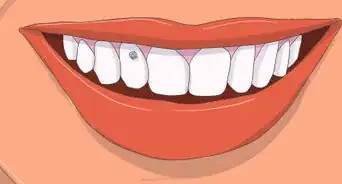
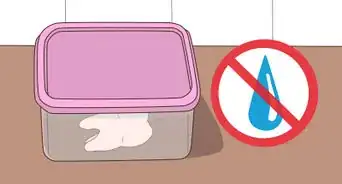
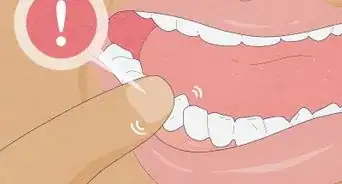














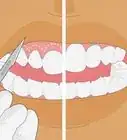


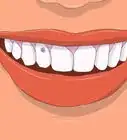



































Medical Disclaimer
The content of this article is not intended to be a substitute for professional medical advice, examination, diagnosis, or treatment. You should always contact your doctor or other qualified healthcare professional before starting, changing, or stopping any kind of health treatment.
Read More...